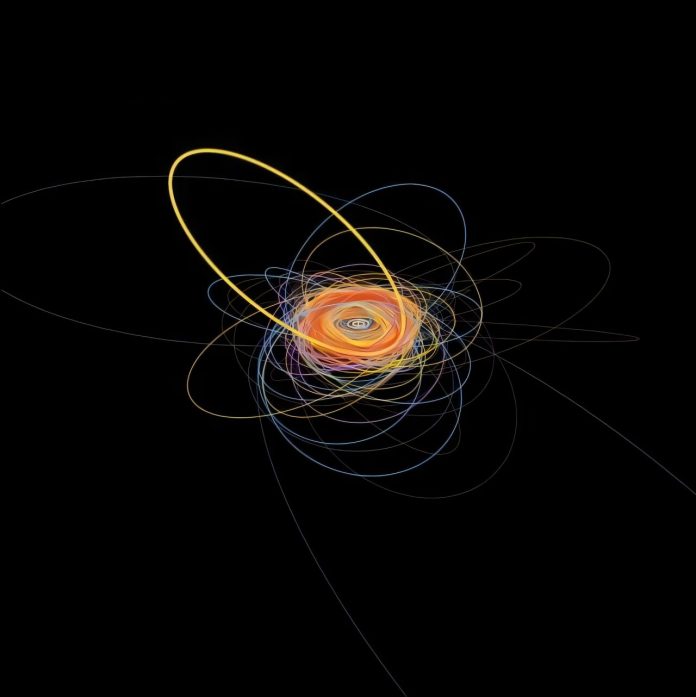
Astronomers have discovered a rare space object far beyond Neptune that moves in perfect rhythm with the giant planet.
The object, named 2020 VN40, belongs to a group known as trans-Neptunian objects—distant, icy bodies that orbit the Sun beyond Neptune.
What makes 2020 VN40 so special is that for every ten orbits Neptune makes around the Sun, this object completes exactly one. It’s the first known object to show this unusual 10-to-1 orbital pattern.
This finding gives scientists important clues about how the outer solar system works and how some distant objects ended up where they are.
It supports the theory that Neptune’s gravity temporarily captures small objects as they pass through space, causing them to settle into synchronized orbits.
“This is a big step in understanding the outer solar system,” said Rosemary Pike, lead researcher from the Center for Astrophysics | Harvard & Smithsonian.
“It shows that Neptune’s influence stretches farther than we thought and helps us learn more about how the solar system has changed over time.”
The discovery, published in The Planetary Science Journal, was made through the Large inclination Distant Objects (LiDO) survey.
This survey is designed to find odd and extreme objects in the outer solar system—particularly those with orbits that are far above or below the plane in which most planets orbit.
The team used the Canada-France-Hawaii Telescope to detect objects and followed up with observations from the Gemini Observatory and Magellan Baade Telescope.
2020 VN40 travels on a steeply tilted path that averages about 140 times farther from the Sun than Earth. What’s truly surprising is how it lines up with Neptune. Most objects with synchronized orbits avoid getting too close to Neptune.
But 2020 VN40 appears to come nearest to the Sun when Neptune is also nearby—at least when viewed from above the solar system. In reality, 2020 VN40 is far below the plane of the solar system at that point, so the two objects are never actually close. But this unusual visual alignment has never been seen before.
“This new motion is like finding a hidden rhythm in a song we thought we knew,” said Ruth Murray-Clay of the University of California, Santa Cruz. “It could change how we understand the movement of distant objects.”
The LiDO survey has already found over 140 distant solar system objects, and many more are expected as new, more powerful telescopes—like the Vera C. Rubin Observatory—begin scanning the skies.
According to astronomer Kathryn Volk, “This is just the beginning. We’re opening a new window into the solar system’s past.”
Source: Harvard-Smithsonian.



